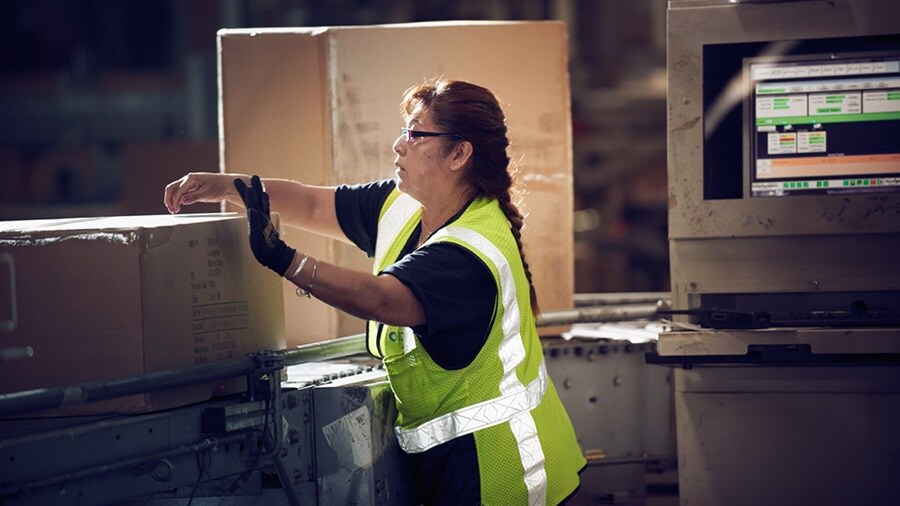Frequent online shoppers may no longer be surprised to find that should they wish to return or exchange their purchase, they will need to pay a fee to cover the shipping and processing of the returned item. Those shopping online less often may still expect to send their order back for free, but not for long as retailers increasingly adapt their return policies – an estimated 41% of retailers charged some sort of fee for returns in 2022, an increase from 33% in the previous year.
At a time when consumers needed convincing to switch from brick and mortar stores, free returns and lenient return policies were used as an incentive and as an investment in learning consumer preferences. Today, when the average return rate for in-person purchases is in single digits, and average ecommerce return rate stands at 18.2%, retailers are re-assessing their return policies and often turning to charging the cost back to the consumer.
The cost of returning products
With ecommerce sales bringing in a larger chunk of retail revenue year-on-year, the size of the reverse logistics market worldwide is estimated to grow from 664.93 billion USD in 2022 to 954.5 billion USD in 2029. For businesses, the actual cost of returns goes far beyond the shipping costs – processing, tied-up capital, inventory holding, order-picking, liquidation, and discounting expenses can add up to approximately 17% of the prime product cost. When an item is sent back to a fulfillment center, it needs to go through a grading process, during which it is determined whether the item is fit for redistribution or, in case of some fashion retailers, it will be sent to an outlet store where it will be sold at a discount. If an item is not in a condition to be sold again, it needs to be destroyed according to the process specified by each country, which often increases the cost of the return for the business.

Taking all these costs in mind, how can ecommerce businesses offer free returns without their margins taking a hit? The answer will laregely depend on their size and presence in brick-and-mortar stores. Retailers with a physical location can offer free returns in store, cutting back on transport and processing costs, and keeping their customers happy with a promise of free returns. Sellers located overseas can establish return centers closer to the end consumer, while keeping their primary warehousing and distribution closer to home.
“While this strategy doesn’t directly decrease the cost of return itself, it allows for returned product to stay in the destination country, where it can be sold again, reducing its outbound and reintroduction cost,” explains Ka Man Wong, Ecommerce Growth Enablement Manager at Maersk.
Large retailers and online marketplaces have started introducing so-called premium programmes, where for a yearly fee, consumers receive free delivery and returns on all orders. This approach can work well for large marketplaces whose customers order regularly enough to deem the premium worth the cost, but even smaller ecommerce businesses can take inspiration.
“How we see smaller businesses offering free returns without eating into their margins is increasing the minimum spend treshold for free delivery, which then also includes free returns,” says Wong, “this strategy combines the best of both worlds – businesses can cover the cost of reverse logistics, and consumers still get to return or exchange their purchase for free.”
Return options and consumer behaviour
Although ecommerce businesses continue to offer free returns to boost customer satisfaction and retention, research suggests there are other factors consumers find more important than returns being free. Ability to choose the return location, such as parcel shop, physical store, or home pick-up, and transparency in cost communication both rank higher than free returns on European consumers’ list of return criteria. Clear communication on return process and refunds is crucial not only for consumers to know what to expect, but also for retailers to guide the desired consumerl behaviour.

The Refund Effect happens once a consumer decides to return a purchase and consequently treats the money spent as already lost, so the refund feels as “free money” and therefore feels less painful to spend on another purchase. To play into this effect, businesses need to embrace the return process as part of the post-purchase experience. Offering exchanges or store credit as an option in the return process allows ecommerce businesses to keep the revenue from the original sale, and enhance consumer satisfaction and loyalty by offering a convenient option for those who simply whish to exchange the product for a different one.
When developing a return policy and tailoring post-purchase experience, businesses should know where their consumers are along the adoption curve, and use that information to establish a return policy that will help optimise their supply chain. Finally, instead of discouraging returns, businesses can implement virtual assistant tools to help customers select the right product and size. “We see that businesses with ineractive size charts and calculators experience lower returns due to poor product fit. Even products in beauty and cosmetics implement tools for skin or color analysis to imrove consumer experience and minimise the number of returns,” concludes Wong.
未来,您想随时了解必读行业趋势吗?
您已经完成了,欢迎“登船”!
很抱歉,发送您的联系请求时出现问题。
请查看表单字段,确保所有已正确填写所有必填信息。如果问题仍然存在,请联系我们的支持团队以获得进一步的帮助。
未来,您想随时了解必读行业趋势吗?
使用此表格注册,即可直接在您的邮箱中接收我们的洞察见解,进入一个真正的综合物流世界。简单操作,即从我们为您量身定做的精选文章中获得启发,了解相关行业洞察信息。您可以随时取消订阅。













